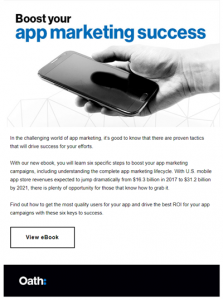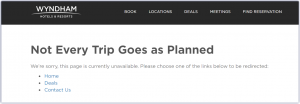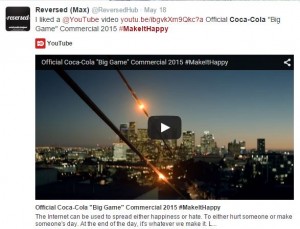ABM has the potential to improve both marketing and sales operations.
“What we have learned over the years in B2B — where we have higher average sales prices — is that we’re dealing with buying committees and multiple personas that are making [buying] decisions,” said Auseh Britt, VP of growth marketing at Terminus, her presentation at The MarTech Conference (scroll down to watch the video of their session). “It’s a more efficient and effective approach to go after accounts than it is just one or two individuals.”
Rather than tailoring messages to individual customers, marketers in the B2B space are recognizing the need to adopt account-based strategies to resonate with groups of executive-level buying groups. This process necessitates a strong appeal to brands’ goals — often at the enterprise level — and this can’t be done without proper marketing and sales team alignment.
“The other thing that you need to make ABM successful is tight marketing and sales alignment,” Britt said. “It only works if you’re working together as a unified team and deciding who your ICP [ideal customer profile] is. Which accounts within that ICP are you going to go after?”
Here are three ways an ABM strategy can help improve sales and marketing velocity.
Account targeting from a marketing side
“I’ve worked for organizations where marketing ended when the opportunity was created,” Britt said. “We were all about driving the demand and the awareness and getting those qualified opportunities. But then after that salespeople are sometimes like, ‘Alright, it’s mine now. I don’t want any kind of marketing or promotions hitting them because I don’t want this prospect to get distracted.’”
“I think that’s changing now; it’s refreshing to see that marketing does have a role to play with open opportunities,” she added.
Britt says marketing teams can improve account targeting by looking at these open opportunities, especially those one might think to glance over at first. She recommends including opportunities that aren’t just categorized as top tier — those with the highest propensity to close quickly. They should reach out to accounts that are under a certain dollar amount or those that are at a higher stage of the sales funnel as well.
Sales engagement and outreach
Britt’s presentation also highlighted the necessity of sharing data between marketing and sales teams. When accounts start to visit your web properties, click on your ads, or attend your event, marketers must get sales teams involved with their marketing campaigns.
She said marketers should share that data with sales so they can see who’s engaging and what type of intent signals they’re showing. This provides additional opportunities for sales outreach — even if no one’s clicking on that ad, they might be showing other intent signals that sales can act on, such as visiting the site or interacting through some third-party intent.
Britt’s own marketing team’s process of collaborating with sales, enhancing their engagement and outreach opportunities. They put together an email template for sales to use (shown below). It showcases an upcoming virtual event in the signature portion, helping sales better connect with accounts via email marketing.
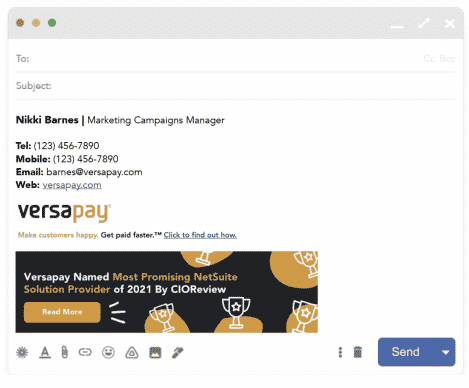
“It’s about continuing to have those touches, that engagement with the account,” she said.
Account analysis and measurement
“When it comes to pipeline acceleration, you’re hopefully improving your win rate with these [ABM] programs that you’re putting the surround sound type of campaigns around,” said Britt. “You’re increasing your average deal size as you’re nurturing them through the opportunities journey and then shortening that sale cycle and increasing the sales velocity.”
She suggested marketers develop methods for measuring account engagement — both from a marketing and a sales side. Teams should look into whether accounts are clicking on your ads, registering for your events or your webinars, signing up for the direct mail, and other straightforward measurements, but also less obvious engagement metrics. These include activity time, churn rate, customer satisfaction, customer lifetime value (CLV), and more.
She recommends marketers put together a high-level overview of their analysis for managers, what she calls an ABM scorecard (shown below). Scoring your marketing and sales teams’ account engagement in this way can make data clearer for higher-ups to act upon.
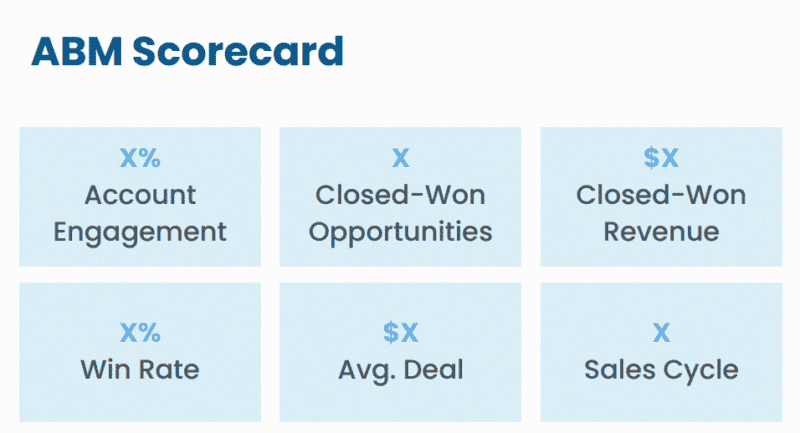
“This is a simple way to display those key metrics, especially when you’re reporting it to leadership,” she said.Account-based marketing: A snapshot
The post How ABM strategies can accelerate marketing and sales velocity appeared first on MarTech.
(29)
Report Post


